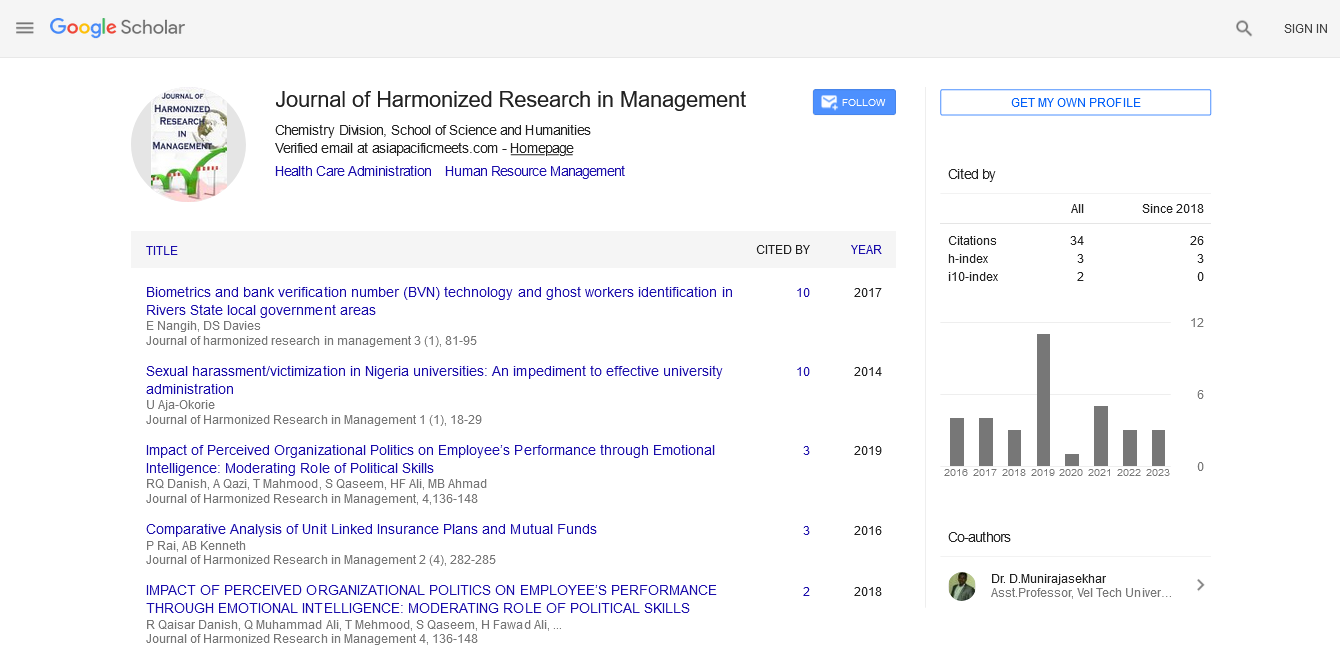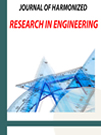Commentary - (2022) Volume 8, Issue 3
EFFECTIVE ROLES AND ITS CHARECTERSTICS OF ORGANIZATION MANAGEMENT
Emma Sabastein*Received: Nov 21, 2022, Manuscript No. JHRM-22-77913; Editor assigned: Nov 23, 2022, Pre QC No. JHRM-22-77913 (PQ); Reviewed: Dec 06, 2022, QC No. JHRM-22-77913; Revised: Dec 15, 2022, Manuscript No. JHRM-22-77913 (R); Published: Dec 23, 2022, DOI: 10.30876/2454-5384.22.8.133
Abstract
Description
Organizational management refers to the art of bringing people together on a common platform to work towards a predefined goal. Organizational management enables optimal use of resources through careful planning and management in the workplace. Organizational management gives employees a sense of security and togetherness. Good coordination between different departments requires effective management system. As a result of effective organizational management, employees complete their own tasks within the set of timeframes. Employees are loyal towards their work and do not consider it as an burden on them. Effective organizational management creates a peaceful and positive atmosphere in the workplace. Effective management ensures an organization’s profitability. Simply put, organizational management describes the efficient handling of an organization and its employees.
The main characteristics of organizational management are planning, organization, staffing, leadership, time management, and motivation. Leadership encourages employees to contribute effectively to team and organizational success. The art of expressing one’s thoughts and ideas clearly is called effective communication. Individuals need to communicate effectively in the workplace to increase transparency and clarity. Effective communication not only helps get information right, it also helps make decisions. Do not interfere when others are speaking. Let’s end the conversation first. Wait turn to speak, please pay close attention to the content of speech. Don’t let words hurt colleagues.
Organizational structures must adapt well to the organization’s changing needs and goals, as well as market conditions, in order to maintain organizational efficiency over the long term benefits of organization owners. Organizational management also enables administrators to quickly respond to factors that affect the company’s internal or external expectations. Organizational management is a fundamental asset in creating an environment that supports the continuous improvement of individuals and their organizations in order to better serve the communities they serve. It also enables managers to quickly respond to factors affecting internal or external expectations of the company. Organizational management is the process of structuring, planning, and directing an organization’s resources and members to achieve its goals. In the business world, the end goal is much the same: to benefit the owners of the organization.
Especially since the turn of the 20th century, management’s scientific aspects have been emphasized. Scientific nature of management is reflected in the fact that it is based on more/ less codified body of knowledge consisting of the theories and principles that are subject for the study and also for further experimentation.
Structures can also be functional or divisional. Mainly Functional structure focuses on specialization and it has departments that perform work together, such as marketing and sales. Specialization refers to the process of identifying work duties and tasks that can be completed by employees that are specialists or experts in that area.
Divisional structure defines as the group of the employees based on the location, products, processes, or customers. This structure uses departmentalization as it allows each part to fully function only, if it were its own organization. Departmentalization is an process of merging several different types of positions into one group that can function independently. For example, corporations generally have different branches and each branch perform all essential functions of the company individually. A matrix structure is a combination of both functional and departmental structures as it contains employees from a particular department who have come together for a particular project. This structure may require employees to report to multiple managers.
Leadership in an organization can also be classified as formal or informal. Formal leadership occurs when an employee in authority leads a subordinate employee. This is the typical leadership style of a manager within an organization tasked with overseeing other workers. Informal leadership takes place when an employee without authority in the organization naturally leads the others.
Conclusion
Managers may find that their role includes administrative duties in addition to general administrative responsibilities. As a general manager in a healthcare facility, her day is a mixture of broad management and detailed administrative duties.
In the event of a conflict, a manager should step in and resolve the differences immediately. Individuals sit facing each other and discuss their problems. Try not to be prejudiced against anyone. Managers should be good role models for their employees.

Google Scholar citation report
Citations : 92
Journal of Harmonized Research in Management received 92 citations as per google scholar report









